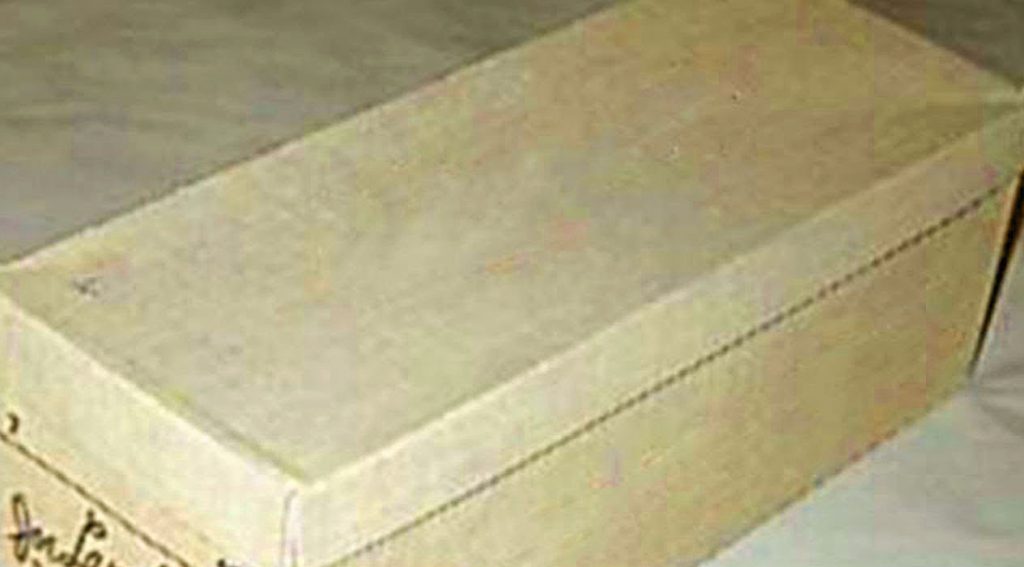Apparently THIS Stops Lint From Sticking To Everything In Your Laundry. I Had No Idea.
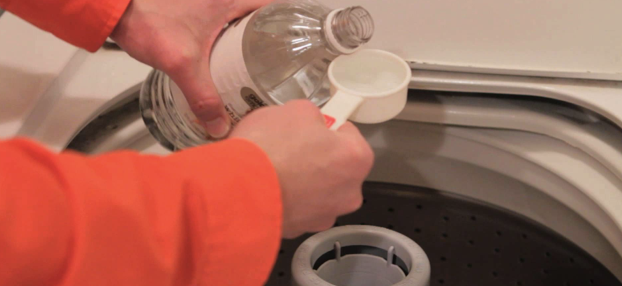
Let’s be honest, one of the least exciting chores that must be done around the house is laundry. The inevitable build up of dirty clothes is an annoying, never-ending cycle, but also a very necessary part of life. The worst part about it is figuring out how to properly launder and clean all the different types of clothing you have. Some pieces may be badly stained or heavily soiled, then there’s towels, sheets, whites, colors, and whatever else needs special consideration!
In turn, for all of those different things there are numerous products like detergents and fabric softeners, dryer sheets, spot and stain removers, bleach, and more that are designed to clean certain things. They add up fast, but you don’t even need half of them, instead all you really need is white vinegar.
White vinegar allows you to get all of your laundry done with the least amount of guesswork and products. How so? Check out the video and read on for the long list of white vinegar laundry uses that will make your clothes cleaner, softer, better smelling, and less static-clingy!
Clean and Brighten Colors- In addition to regular detergent, place some white vinegar in your washer’s dispenser so that it gets released during the rinse cycle. For larger sized loads use ½ cup and for average-smaller sized loads about ¼ cup of white vinegar.
Sweat Stain Removal- Before washing, spray some white vinegar on the stains, and then launder as per usual.
Stubborn Stain Removal- Soak clothes overnight in a tub filled with warm water and ½ cup of vinegar then wash them as you normally would the following day.
Deodorize- Vinegar is a natural odor neutralizer and works wonders at eliminating stinky smells, from mildew to smoke and perfumes.
Remove Built-up Residues- Powdered detergents have a nasty habit of leaving behind residue but by adding a half a cup of white vinegar you can both eliminate and prevent them.
Fabric Softener- Simply pour a little bit in the compartment for the fabric softener and you’ll notice the difference.
Delicates- Fill a sink, tub, or container with warm water and then add six tablespoons of white vinegar. Hand wash delicate items and soak them for 30 minutes before rinsing and drying.
Clean the Washing Machine- Don’t place any clothes in for this, simply add in a full cup of white vinegar to the machine’s dispenser and run it on the hot cycle. When it’s all done any built up grime, waxes, or residues will be gone.
Reduce Static Cling- When you wash your clothes with vinegar it reduces the static charge and so they’ll attract less dust, animal hair, lint, and all that fuzzy type of stuff.
White vinegar can basically do everything you need in terms of doing laundry and cleaning clothes and the only other thing you might need is detergent. Using vinegar can help you save money and cut down on all the irritating, harsh, chemical-laden products you use. Try it the next time you do laundry and see how you like it!
Please Share This With Family and Friends
THIS Is The Disturbing and UNTHINKABLE Reason Why You Should Wash Your New Clothes Before Wearing Them!
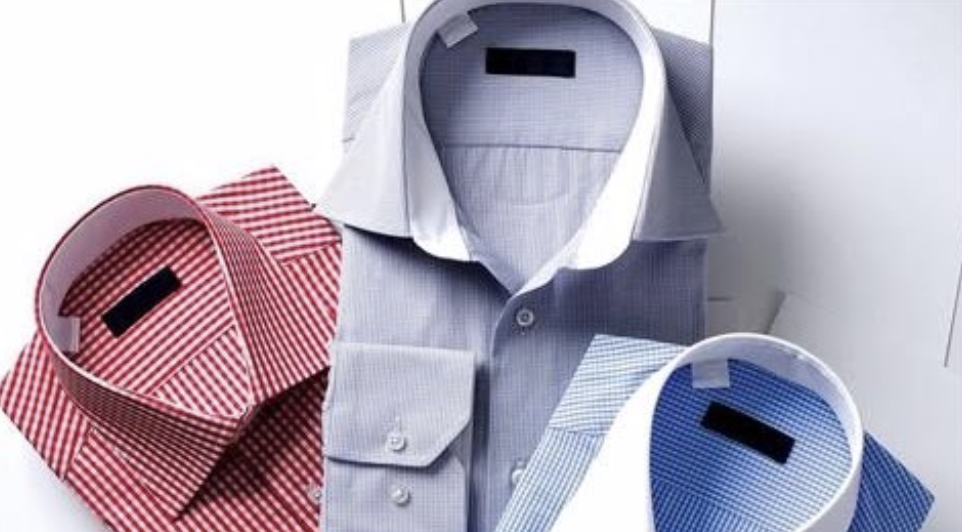
image via – youtube.com
I consider myself to be pretty savvy about what and how to launder garments, but I have to be perfectly honest…I did not know, nor do I, wash new clothes before wearing them. I always wash new sheets because they seem to have a paint-like odor when they are removed from their packaging.
Since I never smelled anything off-putting on new clothes, it never crossed my mind to wash them before wearing them. I’m more than a little skeeved out about this, after watching the video below, which has informed me that I may be wearing a lot more than just clothes.
Until your new clothes land on your body many hands have touched it during production, to say nothing of the number of people who have tried on the garment, before it lands in your possession for longer term wearing.
As you will hear, the Wall Street Journal was informed by Donald Belsito, a dermatology professor from Columbia University, that both some infectious diseases and lice can remain alive long enough to be passed on through clothing! He advises that clothing should probably be washed TWICE before wearing, to be on the safe side.
However, the more common thing found in most clothing that should mandate washing before wearing, are formaldehyde resins and dyes used in clothing production. You will hear the skin dangers discussed in an interview in the video you are about to watch.
I had to crack up at the end of the footage, where CNN’s Anderson Cooper’s admission of washing his jeans very infrequently, gets a surprise from Stacy London. She had secretly had a pair of his jeans tested…the results will confirm the need to KEEP WASHING your clothes REGULARLY!! Let’s just say, that Anderson almost fell off his chair!
Please SHARE this with Family and Friends
She Films Her Raccoon Washing His Toys Until She Notices He’s Washing THIS Unexpected Surprise!

I’m not sure which part of this video to be the most impressed by. First of all, I don’t know what language they are speaking or what country they are from, because I am relatively uncultured, and, feeling much like a giggly Homer Simpson, I find the situation mysterious and silly.
Pretty little cups of tea make something quaint about the average looking household. With its simple linoleum floor and laminate counter tops, it is not a place you’d expect a residential raccoon. They have a raccoon as a pet. My only experiences with raccoons have not left me wanting the animal in my home. I’ve always seen them sneaking around at night and making a general mess of things, like smearing trash all about the neighborhood.
I have also witnessed the vicious side of the coon when an employer trapped one and gave me the assignment of releasing its very angry self from a small cage into the woods.
I thought for sure it was going to eat my face. Also, I once found one of my chickens as a leftover carcass hanging from a tree after listening to it lose a battle with a raccoon one fine summer evening. But this pet raccoon seems to have adapted well to domestic life, and stole the woman’s phone in order to give it a bath with all of its toys.
The lady exasperatedly recovers the phone after it was submerged in water. The raccoon immediately found another of the woman’s prized possessions to soak, as she turns to find her shoe floating in the small tub. It seems almost as if someone took a short cartoon and played it out as real life. What a rascally raccoon!
Please Share This Hilarious Video With Friends On Facebook
He Puts a Bunch of Aspirin In The Washing Machine With His Laundry. The Reason Is Brilliant.
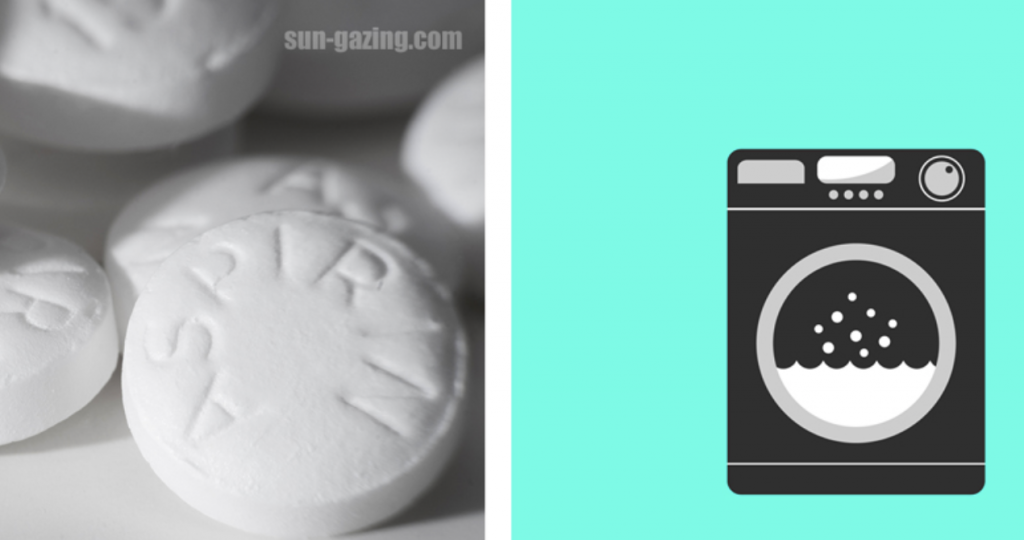
Keeping white shirts crisp, clean, and white is a never ending battle. Everything from coffee and juice to grease, oil, and ink will leave a stain if it gets on your clothes. However, even if you avoid spilling all of these things on your white shirts, you still have to deal with ugly, yellow armpit stains.
Nothing else ruins a nice white shirt like how sweat stains do. They just look gross and unsightly, and they make you appear dirty, sloppy, even unhygienic. Pit stains are notoriously hard to remove and no amount of soaking in cold water or bleach will get them out. Bleach can actually make them worse!
Part of the reason why armpit stains are so stubborn is because they’re not actually caused by sweat alone. Instead, the stains result from aluminum, which is found in the deodorant or antiperspirant you use, reacting with your sweat and shirt. Both cotton shirts and sweat are proteins and when aluminum reacts to them it causes the nasty yellowing to occur. This reaction also bonds the sweat and deodorant to your shirt and makes the stains water-resistant (aluminum is what gives an antiperspirant its sweat blocking ability). That’s why armpit stains are so tough to remove, they’re essentially chemically set-in and repel water!
Rather than let a little problem like yellow armpits ruin your favorite clothes, try this wardrobe-saving laundry trick and get the most mileage and wear out of your whites. Take five 325mg aspirin tablets and crush them up. Fill a two gallon bucket or tub with hot water and dissolve the crushed aspirin in it. Place any white, sweat stained clothes in the solution and allow them to soak for a minimum of eight hours. Wash them in the machine as per usual and when they come out the stains will be gone.
If your don’t have a lot of time to soak clothes for hours you can place five aspirin tablets in the washing machine with a load of laundry. This won’t get stains out as well as soaking them will do, but they will be noticeably faded. To increase the sweat stain fighting power of aspirin even more, pre-treat stains by combining 5 crushed tablets with a ¼ cup of warm water. Smear the resulting paste on the stains and allow it to sit for several minutes before rinsing and washing the clothing as you regularly would.
Finally, if you need to spot treat smaller sweat stains or a single item, this small batch aspirin soak will do the job. It’s great for shirt collars and kids shirts. Crush up two 325mg aspirin tablets and dissolve them in a glass filled with hot water. Place the sweat stained portion of the shirt in the mixture and let it soak for 8 hours. Wash, rinse, and you’re done!
What makes aspirin so useful and effective at removing sweat stains is the main active ingredient it contains, salicylic acid. When tablets are dissolved this acid gets released and works by breaking up the proteins in sweat stains. It’s also gentle on clothing and won’t harm or damage garments by ruining the fabric. Try this laundry trick tonight or file it away because it will definitely come in handy down the line!
Please SHARE This With Family and Friends
If You Wash Your Raw Chicken Before You Put It In The Oven, You Need To Stop Right Now
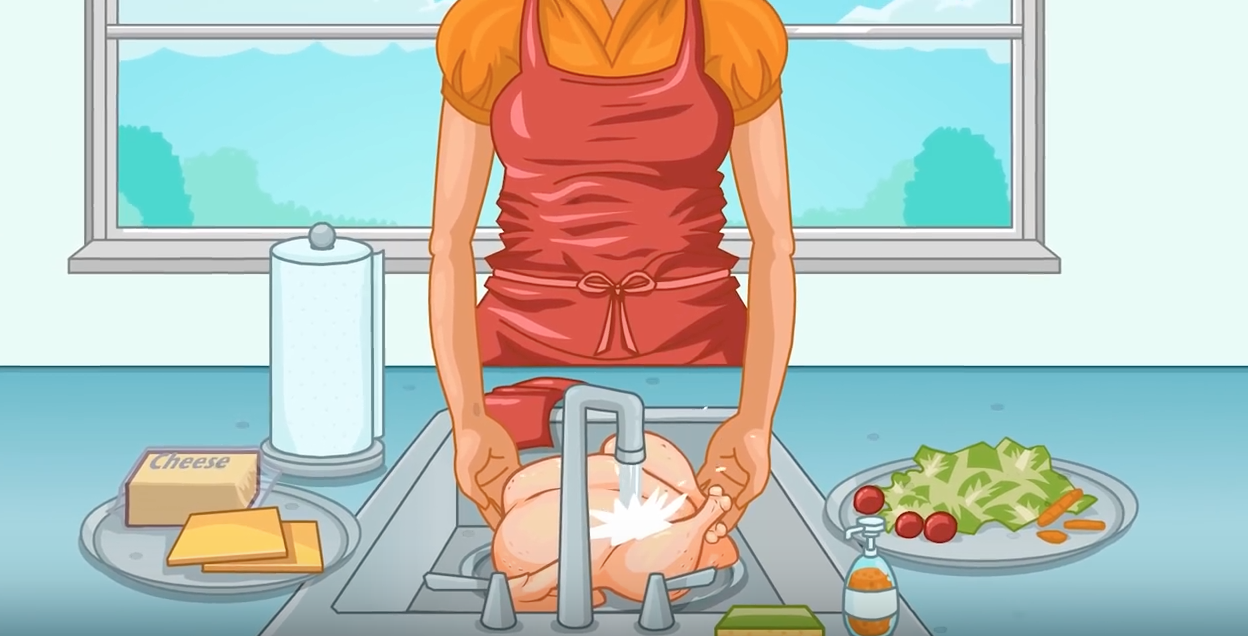 image via – youtube.com
image via – youtube.com
After opening a fresh package of raw chicken, do you rinse it off in the kitchen sink before cooking it? If you answered yes and this practice describes you, you’re not alone. Many people do exactly that because they either want to clean off the sliminess, or they picked up the habit from watching their mom cook. In fact, if you don’t wash raw chicken before cooking it then you’re in the minority. According to Jennifer Quinlan, a researcher at Drexel University, around 90% of the people she surveyed say that they too wash their chicken before cooking it. With numbers that high, you’ll definitely want to read on about why everyone should STOP doing it immediately!
To begin with, washing raw chicken is not necessary in the first place. Cooking it to the correct temperature should be enough to kill any and all of the harmful bacteria on it. The U.S. Department of Health foodsafety.gov website states that chicken and all other types of poultry, which includes turkey, duck, and goose, should reach an internal minimum temperature of 165 degrees. By simply making sure your chicken dinner is well done, you’ll avoid contracting food poisoning.
As it turns out, the only thing that washing raw chicken does is drastically increase the chances of spreading bacteria and microbes all around the kitchen area. When running water hits raw poultry it splatters and this causes it to aerosolize, which is to say that it forms tiny, mist-like particles. These ultra fine droplets can travel far in the air and they end up spreading invisible germs all over the place when they finally settle.
Nasty types of harmful bacteria such as salmonella, staphylococcus aureus, and campylobacter jejuni are now not only in your sink, they’re also on counter tops, cabinets and handles, other foods you’re preparing/eating, kitchen towels, you, and everywhere else! If you end up ingesting these bacteria you run the risk of becoming seriously ill. If you’ve ever had the misfortune of suffering through a bout of severe food poisoning, then you know how much of a painful nightmare it can be.
If that’s not enough to convince you to stop washing raw chicken, not much else will! Doing so helps to limit the spread of harmful bacteria and microbes, which in turn limits your risk of contracting severe illness and food poisoning. It’s also one less step for you to do because only by cooking poultry to an internal temperature of 165 degrees Fahrenheit is it enough to kill bacteria. Please pass this important information along to friends and family and help spread the word, not the bacteria!
Please SHARE This With Family and Friends



